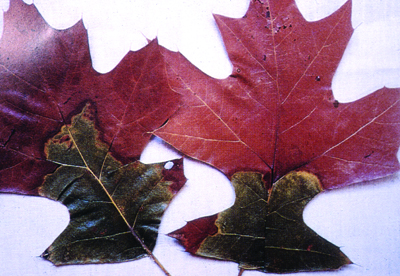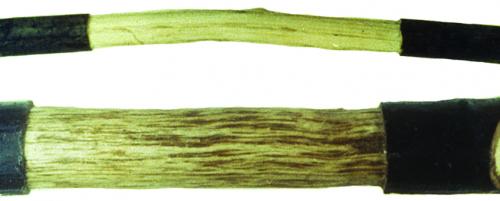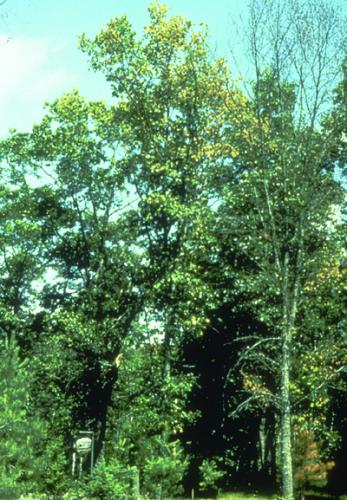Oak wilt
July 30, 2015
Cause
Ceratocystis fagacearum (fungus)
Hosts
Oaks in the red and black group are the most susceptible; white oaks are less susceptible.
Symptoms
Trees in the red and black oak group undergo wilting and rapid death within a few weeks. Those in the white oak group usually experience the death of a few branches and may live for several years after infection. Water-stressed trees can show symptoms within a week of infection. Symptoms commonly develop in July but may be earlier or later depending on the amounts of rainfall.

Infected leaves wilt rapidly, turn brown around the edges of the leaves and usually remain attached to the tree. Browning begins at the leaf tip and spreads downward.
How it’s spread
This fungus invades the vascular system of oaks. Oak wilt is transmitted by picnic beetles (Nitidulidae), which carry spores from infected trees to wounds on healthy trees. Healthy trees may also be infected via root grafts with infected trees.

Brown streaking is visible in the sapwood of oaks infected by oak wilt, but the amount can be quite variable.
Management
Positive identification of this disease should be confirmed by sending twig samples to MSU Diagnostic Services. Samples must be from live branches (green or white tissue under the bark) not dead branches (brown or black tissue under the bark). Collect 3 twigs (at least 1 inch in diameter and 6 inches in length) from 3 different branches with wilting leaves. Grafts between infected and healthy trees should be mechanically severed.

Wilt symptoms usually begin in the upper branches of the tree and progress downward.
Avoid pruning until the dormant season. If pruning or wounding during the growing season becomes necessary, wounds should be sealed immediately with shellac or a water-based sealer. Red oaks infected with wilt cannot be saved. White oaks with less than 30 percent infection may benefit from fungicide injection by qualified arborists. For more detailed information on oak wilt and its management, see Oak Wilt in Michigan, Extension bulletin E-2764.
Print a PDF of this page: Oak wilt



 Print
Print Email
Email



